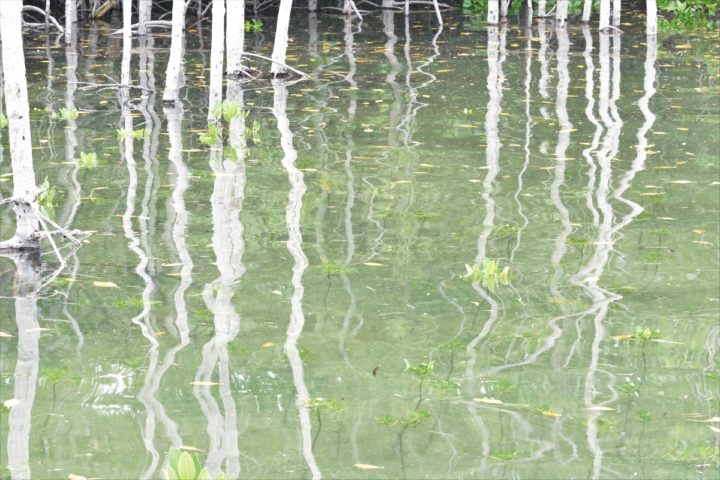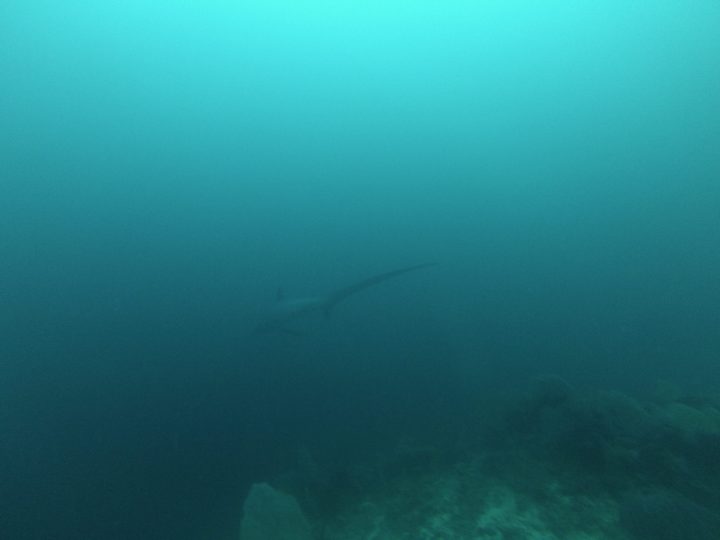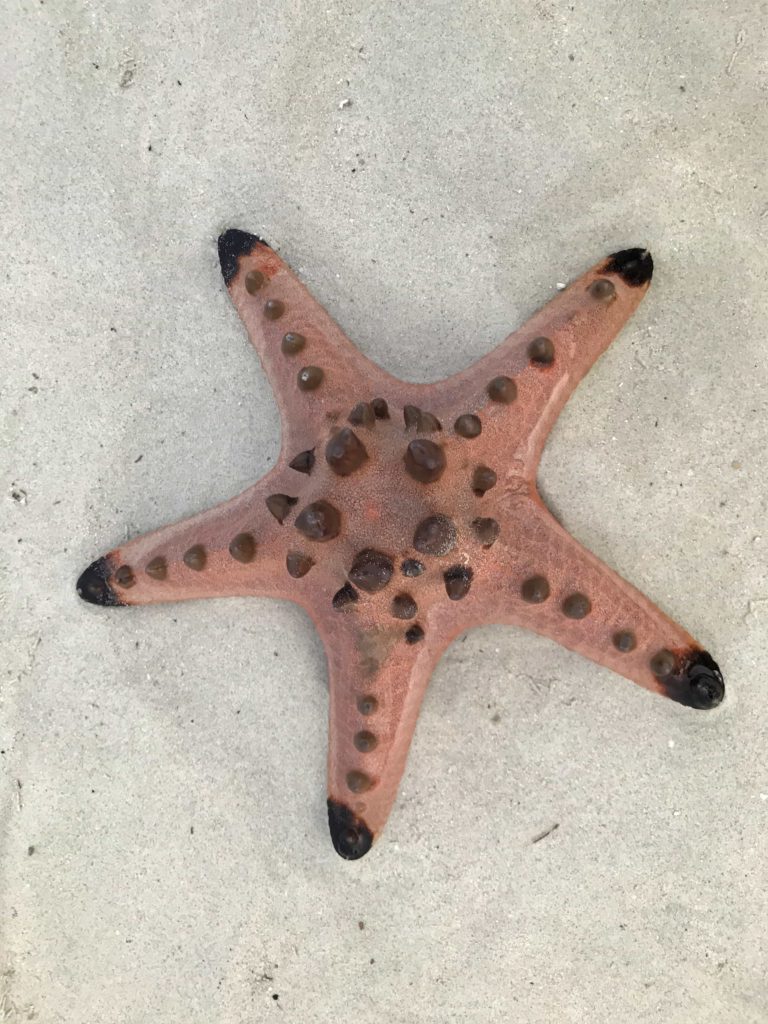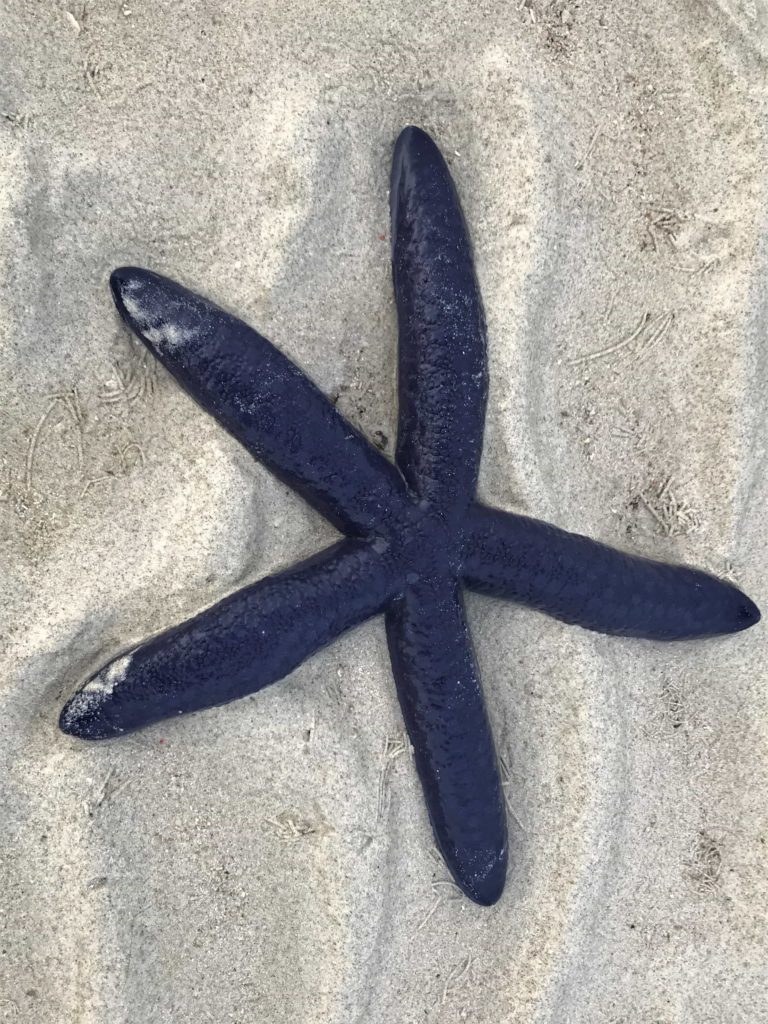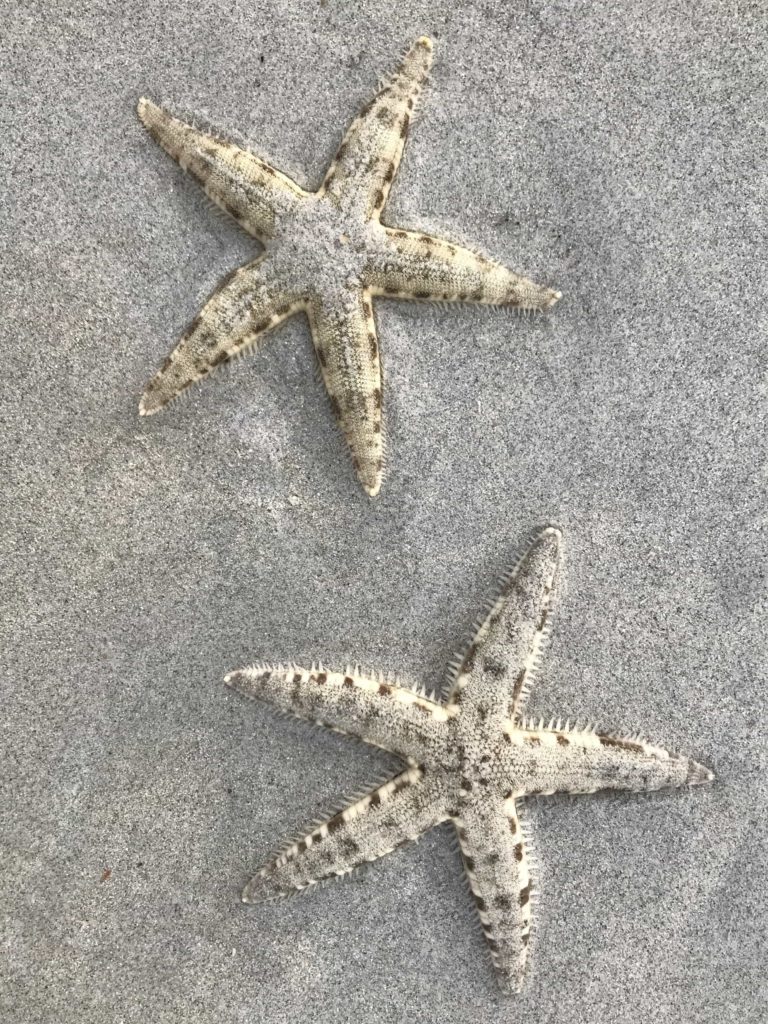I hike the half mile from the dock to the hotel much to the dismay of the eager transportation providers that aggregate outside the terminal entrance. I pass by a cycle rental shop with a sign and talk to the lady. I use the word shop loosely as the building is a shanty with a couple of scooters and a couple of pedal bikes in front. Behind the bikes, a handicapped man wearing nothing but Capri length jeans sits on the dirt melting a rubber inner tube over a propane fire. She asks me if I am single and tells me that her sister-in-law just hooked up with a man otherwise she would set me up on a date but there are plenty of available women around. Oh, and the scooters are 300 pesos for twenty-four hour rental. So, I tell her I will be back in the morning, I want to rent a scooter to tour the island.
I take a trike ride to the downtown area of Santa Fe to get cash at the ATM, sight see, and to eat dinner. The driver shows me a laminated sheet of the sights of Bantayan and asks me if I want to take a tour. I ask him if he has a scooter and if so, I will hire him to take me around the island. He wants to start at 6 in the morning but I won’t promise anything earlier than 8.
Jerry, my driver from the night before, waits outside the gates of the hotel. The management runs the hotel like a compound with a sliding gate and a guard at the entrance to the access road. As we walk over to the rental shop, I ask Jerry for a fair price and he says it’s up to me. I tell him pro bono but I don’t think the joke works. I say how does a thousand pesos work? That’s twenty dollars for a full day’s work. Somebody later tells me that he had a really good day.
Our first stop is ten kilometers to the Nature Park. We stop on a river crossing for photos. I take some pics of three boys jumping into the river from the road. They look like they’re having a good time beating the tropical sun by jumping in the water. The road is more of a miniature truck trail than a road. I actually drop the bike at the entrance to the Nature Park, as I follow Jerry left to overtake a trike, but then he cuts right, crossing directly in front of its path to get to the entrance. I slam on the brakes knowing I will not be able to make that cut without getting run over. I hit loose gravel and the bike drops from under me as I come to a stop scuffing up the bottom. I do not fall, I’m stand over the bike holding it up, so that at least nothing other than the bottom gets damaged. Jerry’s bike doesn’t have a turn signal or mirrors. For the rest of the tour, Jerry considerately uses hand signals to give me a little warning.
The Nature Park doesn’t seem so, it’s more like a resort just a little bit off the beaten path with cabins, conference rooms and a nice swimming pool. Its one natural feature is a fresh water pool in a cave. I take a dip in my skivvies and then take a few pictures. At the fish spa, I sit with two Au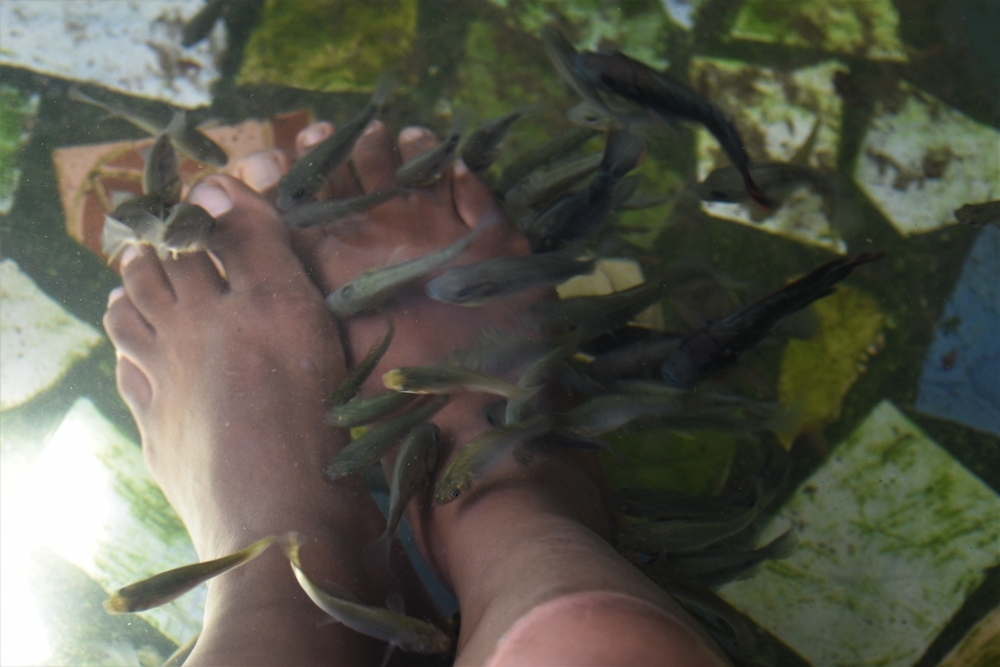 ssie girls from an NGO attending a conference on clean water, while little fish clean the dead skin off my submerged feet. It takes a few minutes, but the tickling and laughing turns into a tingling sensation as I get used to the hundred nibbling mouths.
ssie girls from an NGO attending a conference on clean water, while little fish clean the dead skin off my submerged feet. It takes a few minutes, but the tickling and laughing turns into a tingling sensation as I get used to the hundred nibbling mouths.
We drive another fifteen kilometers to Kota Park at the far north end of the island. We stop on the way for a liter of purple pepsi for Jerry’s thirsty bike. The little crate of purple pepsi in liter bottles at the window store is the roadside gas station. Don’t drink the purple Pepsi. The cove at Kota park has a cement pier out onto an observation tower in the water that doubles as a dive platform for little kids. The littl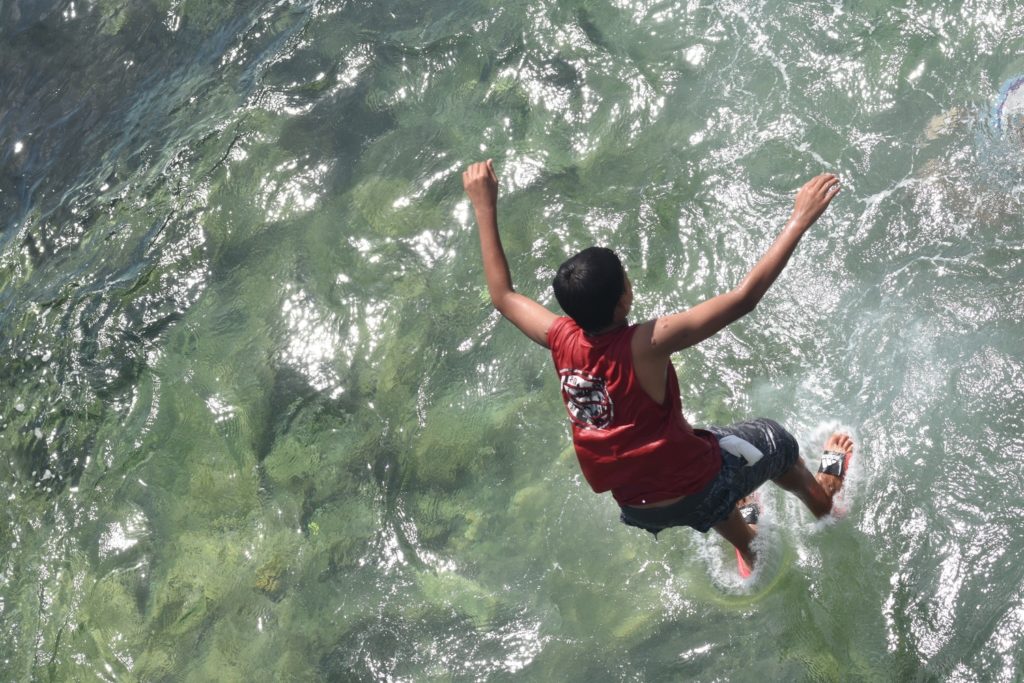 e kids ask me for their “monies” as I walk out onto the deck taking pictures. I don’t give them any. I don’t much care for the demands. The park itself contains the remnants of the walls of a fort but basically is nothing more than a black asphalt wall. The entrance is gated and locked so not much to see. If I would have known that it was also called sunset park, I would have come back at, you guessed it, sunset.
e kids ask me for their “monies” as I walk out onto the deck taking pictures. I don’t give them any. I don’t much care for the demands. The park itself contains the remnants of the walls of a fort but basically is nothing more than a black asphalt wall. The entrance is gated and locked so not much to see. If I would have known that it was also called sunset park, I would have come back at, you guessed it, sunset.
We drive the twenty five kilometers to the town of Bantayan on the main road but never going fast enough for me to lose my baseball hat that I wear in lieu of a helmet while driving in the heat of the sun. At Bantayan, we stop at the Peter and Paul church, witnessing an in progress wedding. The heads of the friends and families turn back frequently looking for the bride down the hundred yard runway. The bride will have a long walk to reach her prize. We don’t stick around long enough to catch a glimpse of her.
Outside Bantayan, we turn off the main road to the mangrove forest. The roads here on out resemble unpaved sidewalks or wide trails more than anything I’d call a road. The 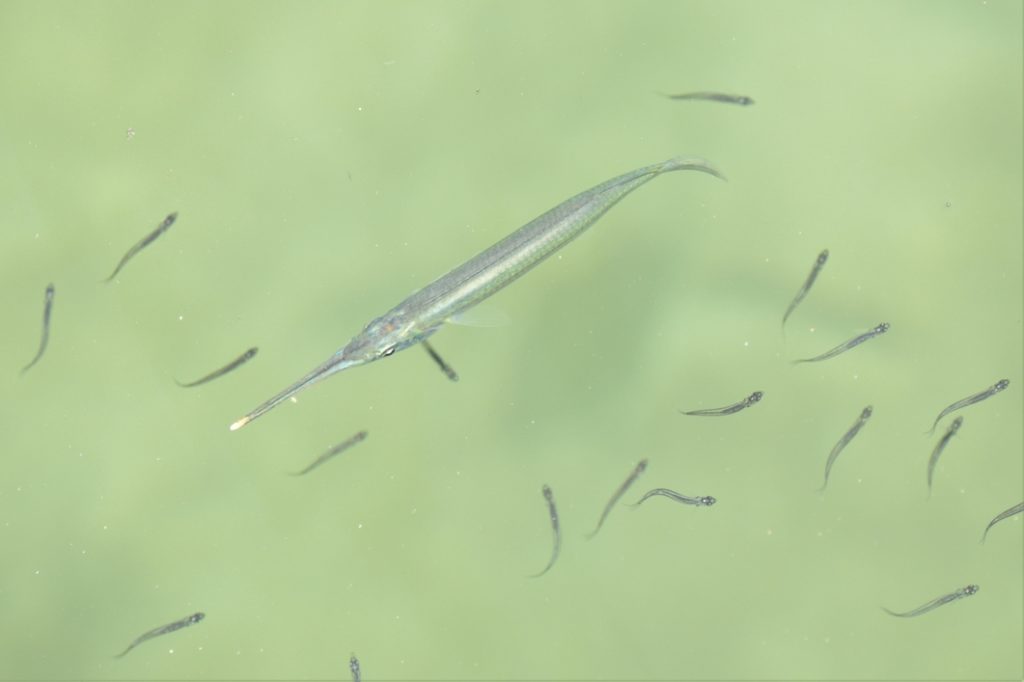 mangrove forest is a 650 meter bamboo walkway built over the water meandering through the mangrove trees. The trail features a tower and covered sitting stations for observation and rest. Little needle-nosed fish and fish with yellow and black horizontal stripes that makes them look like a dart board from above cruise under the mangrove trees in the shallow water.
mangrove forest is a 650 meter bamboo walkway built over the water meandering through the mangrove trees. The trail features a tower and covered sitting stations for observation and rest. Little needle-nosed fish and fish with yellow and black horizontal stripes that makes them look like a dart board from above cruise under the mangrove trees in the shallow water.
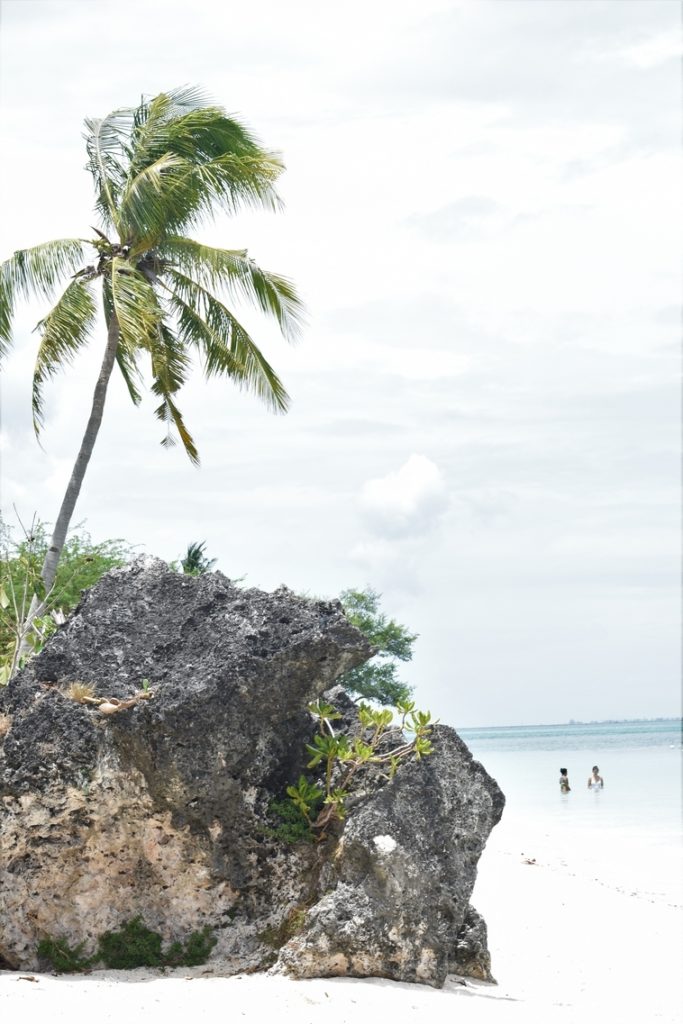 The off road adventure continues as we drive to Paradise Beach. I am greeted by an attendant that says “Welcome to Paradise”. I think my paradise features a hot lady instead of a trike driver, but you can’t have everything, I guess, though I am not sure why. The sand is almost painfully white, the water is bath-water warm, and the waves nothing more than the small ripples of a stone thrown into a pond. I rent a mask and snorkel. The most exciting thing I see is a fist size brown jellyfish from which I maintain a careful distance.
The off road adventure continues as we drive to Paradise Beach. I am greeted by an attendant that says “Welcome to Paradise”. I think my paradise features a hot lady instead of a trike driver, but you can’t have everything, I guess, though I am not sure why. The sand is almost painfully white, the water is bath-water warm, and the waves nothing more than the small ripples of a stone thrown into a pond. I rent a mask and snorkel. The most exciting thing I see is a fist size brown jellyfish from which I maintain a careful distance.
Having lost paradise, we stop at Athena’s for lunch sharing a platter of crab, fish, scallops, shrimps, and fried squid at my expense, which so far, is the only halfway decent seafood meal I’ve had in the Philippines. The shrimp is sweet, fish flaky, scallops delicious, and the crab is crabby. The restaurant is a large open air roof only structure facing the ocean across the dirt road that we rode up on. For a restaurant off the beaten path, it seems to have plenty of customers keeping the three waitresses busy. After lunch, I walk over to the ocean and take the ten foot dive off the rocks into the waves where a bunch of teenagers congregate on concrete stairs leading into the water drinking hard alcohol from a quart size bottle that they are passing around.
We drive on to Ogtong Cave, which is actually a very nice resort with a little hole in the ground cave. A Filipino man from Davao informs me that Mindanao is safe for travel as we wade back thirty or forty feet in the chest deep water to the farthest reaches of the cave.
The last stop on the tour is the sand bar on the south shore beach of Santa Fe. I take advantage of the photo ops and the sparsely populated beach before ending the tour and losing paradise once again getting eight hours, 75 kilometers or so of riding, two dips in fresh water caves and two dips in the ocean, lunch, site-seeing, a hundred or so pics, and fish-cleaned feet for my thousand peso adventure. At least you have to find paradise, before you can lose it.
